“Doesn’t” isn’t equitable to “can’t” when it comes to making fantastical cars. Walk the halls of any major automaker, be it in Milford, Michigan, Toyota City, Stuttgart, or Seoul, and you’ll find scores of talented designers and bright engineers. From an engineering standpoint, there’s very little standing in the way of Kia building a hypercar.
Of course, Kia has no desire to divert billions of bucks and brainpower toward this uncharacteristic and highly unprofitable endeavour. The capabilities and ambitions of engineers and designers tend to run into the brick wall of C-suite prerogatives and balance sheet realities.

Every so often, though, a platoon of engineers gets a healthy line of credit without strings attached. That’s when you get something like the Mercedes-Benz C111-II that I got to ride in during Monterey Car Week.
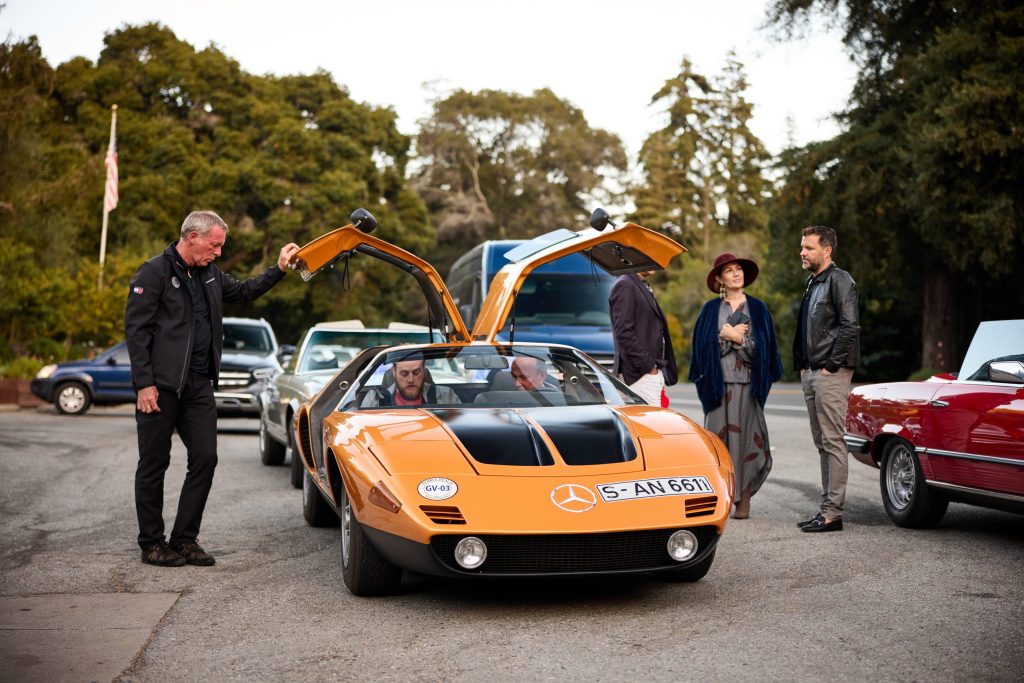
Stuttgart spat out a run of 16 bronze-orange gullwing’d dream-lozenges between 1969 and (at least) 1979 under the C111 banner, all destined for no more than a permanent spot in the archives. These shapely, low-slung coupés were not some failed-in-utero supercar project. Rather, they were highly advanced testbeds and practical concepts that shaped development of Mercedes’ next-gen tech. Aside from deepening Merc’s understanding of composite materials, safety, and aerodynamics, these concepts were primarily designed for testing the production viability of the Wankel rotary engine (Spoiler: It wasn’t viable. The Wankel proved too thirsty). In essence, they were a demonstration of what Mercedes could do… but chose not to.
It’s not like the demand wasn’t there. A series of public showings and demonstrations of the C111 project led to stacks of blank cheques in Benz’ mailroom from hungry customers, the cashing of which would have made even a small production run somewhat viable. But Merc didn’t budge and kept the C111 at the back of the barn, leaving us with a tantalising view into what a mid-1970s German supercar might have been.
One thing’s for sure: It would’ve been fast. After Mercedes gave up its Wankel experiment, it used the C111 to dive deeper into diesel. A re-jiggered diesel C111-IID set performance records on the Nardo Ring with a turbocharged and intercooled variant of the OM617 five-cylinder diesel in 1976. Two years later, the twin-turbo 4.8-litre C111-IV, wearing a positively whacky pair of vertical stabilisers, set a lap record at Nardo at 251 mph.
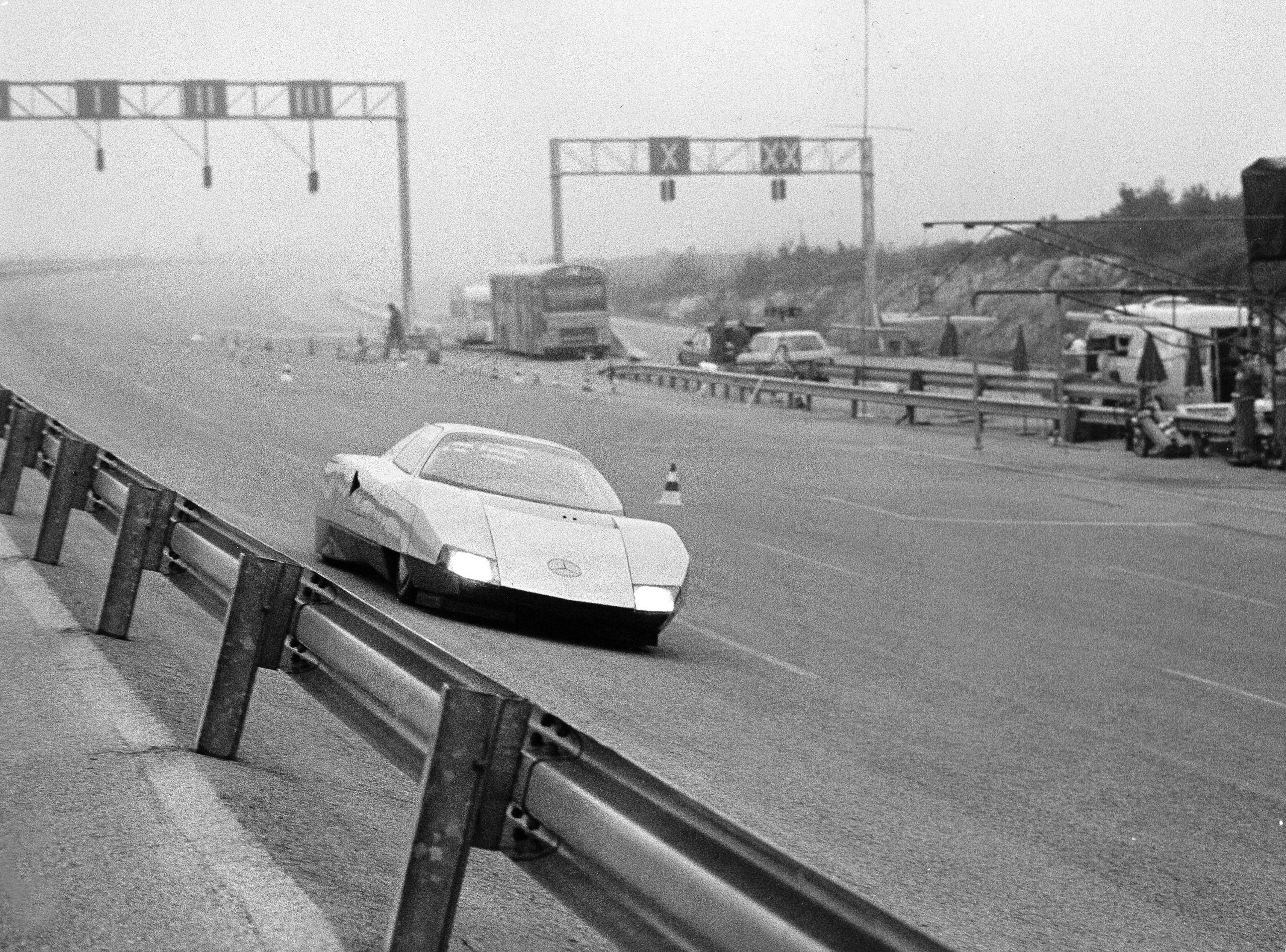
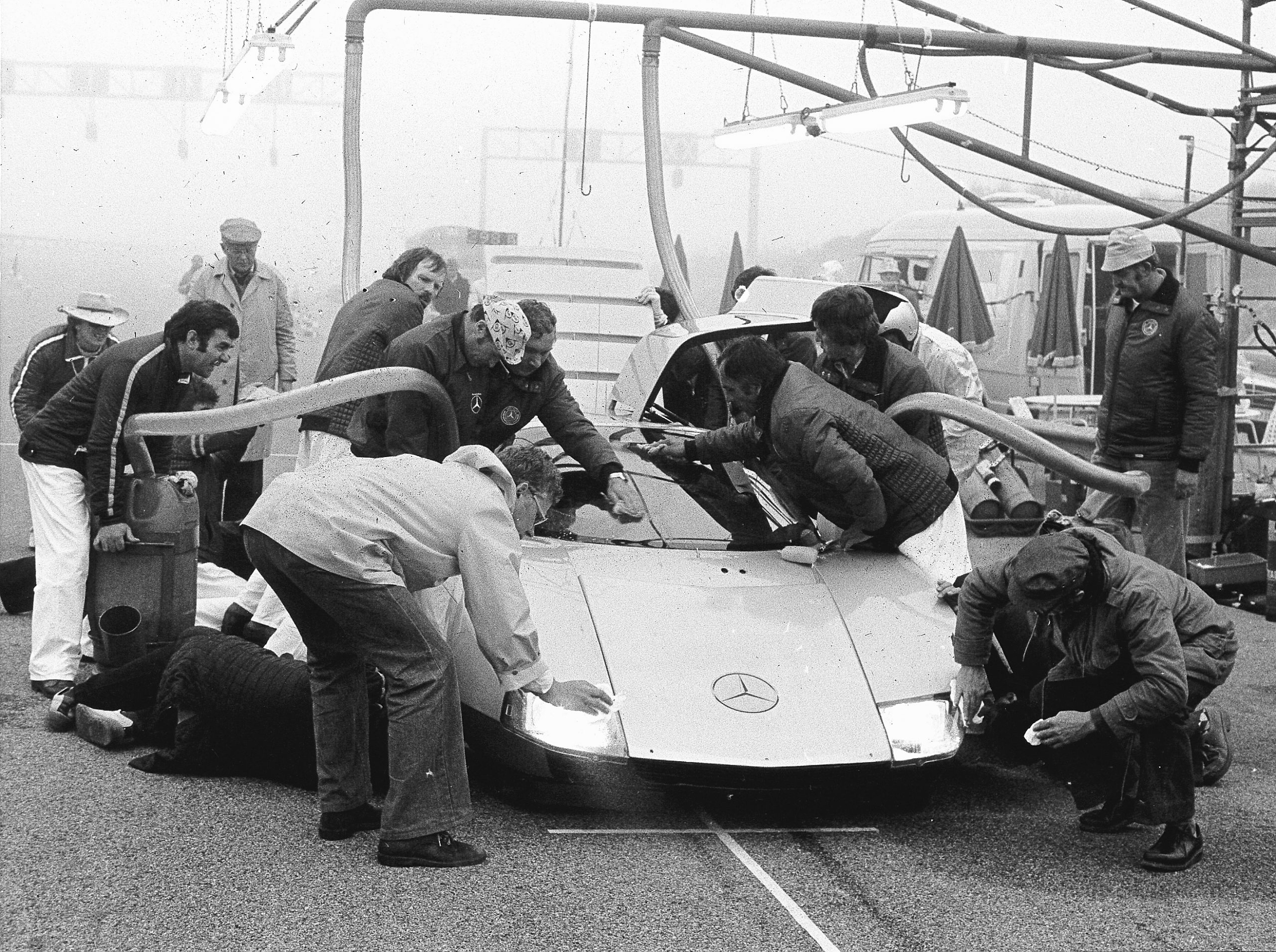
The C111-II present at Monterey Car Week is inarguably the most handsome iteration of the 13 extant C111s still residing in Mercedes’ archives, if not a smidge generic. I love – love – the Weissherbst (White Autumn) paint hue, but the safety orange appearance and no-frills attitude make it appear a bit like a hypothetical government-issue supercar.
We mentioned it’s a longterm tenant at the archives, because no C111 has ever left the car maker’s ownership. Yes, Mercedes recently parted with one of its most significant cars, but Mercedes’ Holy Halls still protect practically all of Merc’s notable experiments, weirdos, and oddballs – alongside the 500Ks, Gullwings, Grossers, and DTM legends.
They use them, too. Members of the Mercedes-Benz Classic support team on-hand to chaperone this artefact informed me this example is one of the workhorses of its lineage. A portion of the C111s remain inoperable due to Wankel frustrations – imagine that – but this car received an in-period transplant of Merc’s pedestrian but obnoxiously reliable 3.5-litre V8. There’s a few M116-powered cars with about a million miles on the clock.
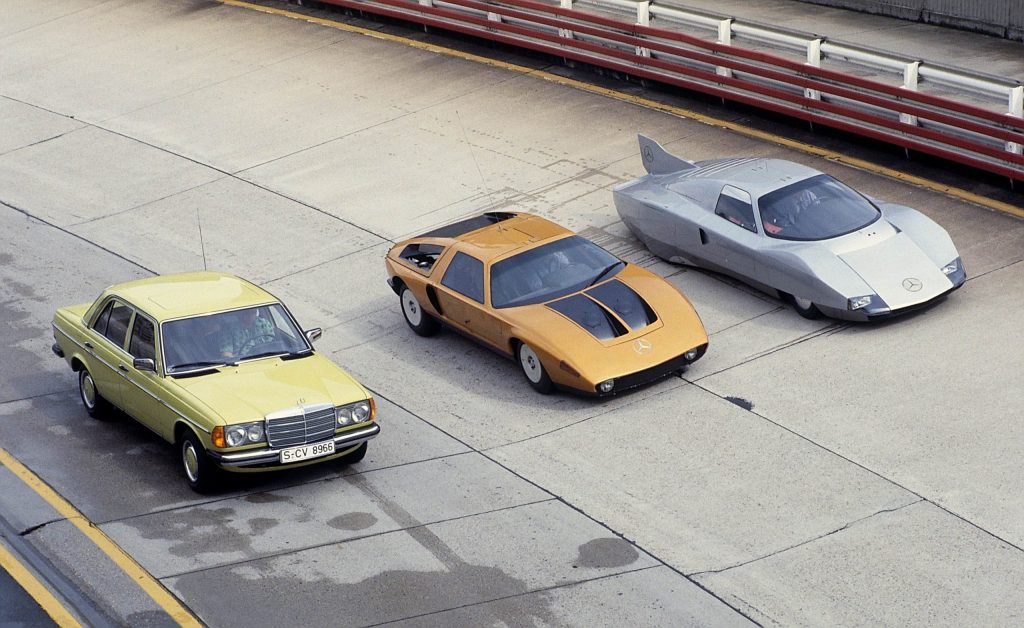
I’m here to ride, not drive. That’s okay, as my chauffeur is Marcus Breitschwerdt, the new global head honcho over at Mercedes-Benz Classic. The tight cockpit is far more prosaic than the extraterrestrial skin. The switchgear and soft dash trim are familiar pulls from the Merc parts catalogue, and what’s not factory are simply off-the-shelf generic components you find in race cars and engineering mules.
Everything still works – typical Mercedes. The C111 is prototypical only at a very granular level; fixed plexiglass windows offer only a small vent for fresh air, and a constrictive three-point harness are the only immediate signifiers of non-production. Air circulation isn’t so bad on the move, but exhaust fumes seep into the space after any prolonged pauses with the hot engine switched off, making my head feel as though it was speckled with burnt bearing grease during the second half of the drive.
Leave it to the Germans to make a bright orange, mid-engine supercar feel less like drugs on a rollercoaster and more like a firm handshake in the boardroom. Aside from the houndstooth upholstery on the seat inserts and gullwing door panels, everything is an austere shade of black with little in the way of the stylistic frills found on its would-be Italian and British competitors. It’s a bit emotionless, but it’s surprisingly comfortable for something so experimental.
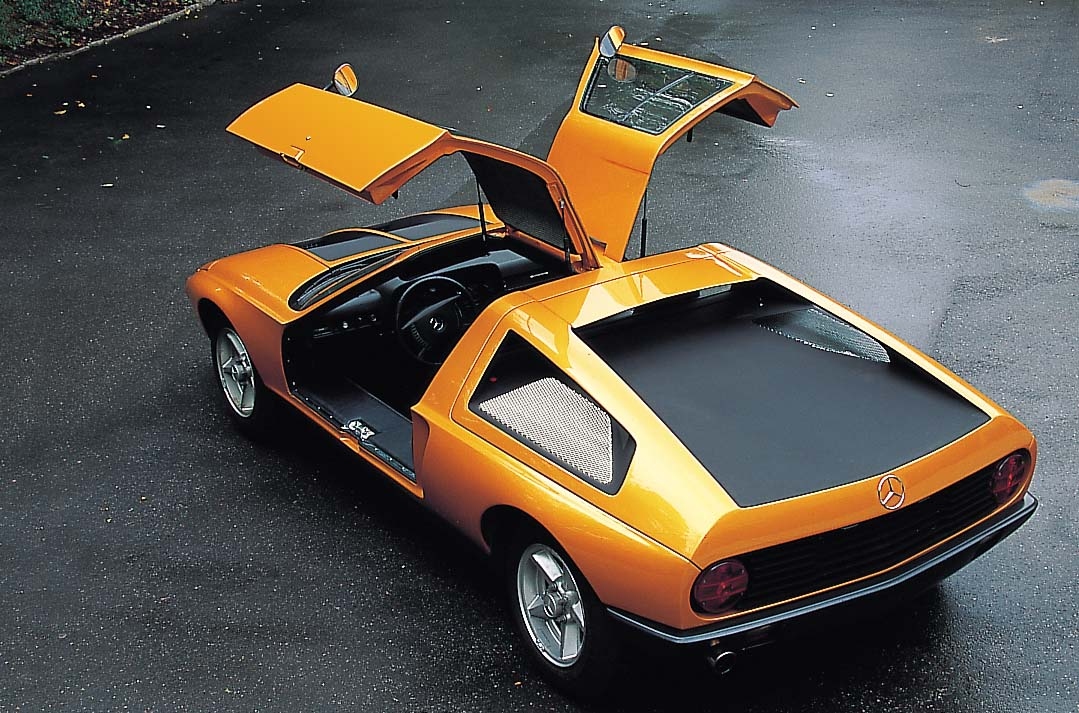
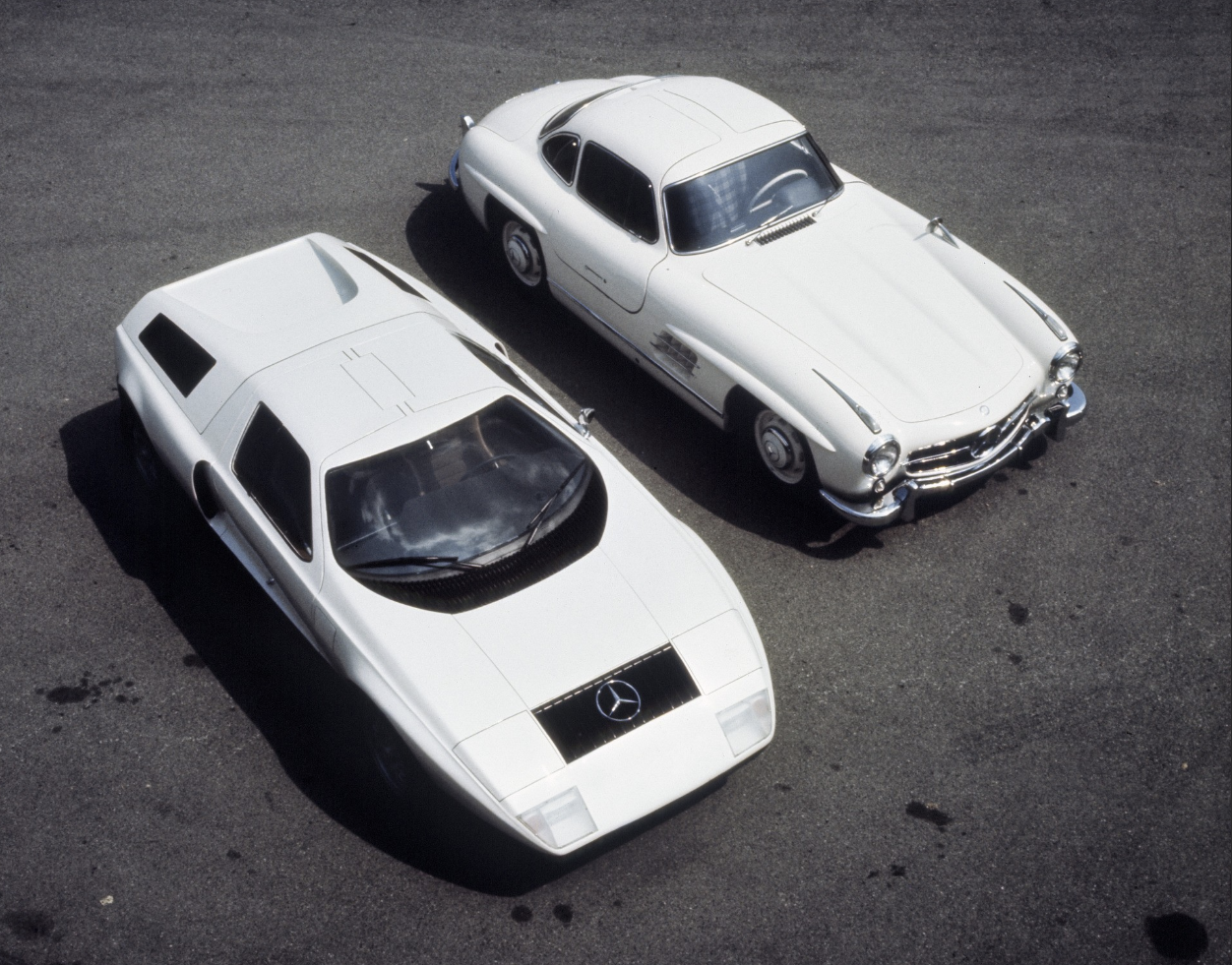
In fact, even in prototype form, the Day-Glo Benz is more comfortable, usable, and friendly than anything contemporaneously “super” on the market. Breitschwerdt appeared to have as much trouble driving this V8 Gullwing as he would a manual W113 Pagoda. At 60mph, conversation was easy and ride composure was weirdly cushioned. Period photos show a C111-II with a storage space under the engine cover, so had we (okay, Breitschwerdt) wanted to, we could have packed overnight bags and road-tripped down to Los Angeles.
Breitschwerdt treated this rolling vitrine of 50-year-old automotive progress with measured care, but wasn’t afraid to give it some stick. Where there was brief reprieve from tourist traffic on Big Sur’s section of PCH, he poked the V8 where it hurt, summoning a peal of dirty, metallic roil from behind our heads. Not quite the fury you’d get from a contemporary Countach or Maserati Bora, but by our reckoning the C-111’s combination of sci-fi looks and German taxi practicality would have made for a compelling antidote to the Me decade’s Italian exotic excess.
Of course, we’ll never know. We’re fascinated with these oddities in large part due to their teasing, look-what-coulda-been nature. We can dream, though. That’s the point of a concept car, no? Only, the incredible C111 wasn’t a concept. It was a rare moment that saw well-funded automotive engineers at the apogee of their industry without a care for “production timeline” or “emissions standards.” It was a case of “we did, but we won’t.” So, they didn’t – and we just can’t get enough.
This article was originally published on Hagerty US.
Read more
Andy Warhol’s Mercedes muse is back on the road thanks to Brabus
Driving the Mercedes 300 SLR “Uhlenhaut coupé” – the world’s most expensive car
Cheddar Gorgeous: 10 times Britain perfected the wedge car











Great read thanks